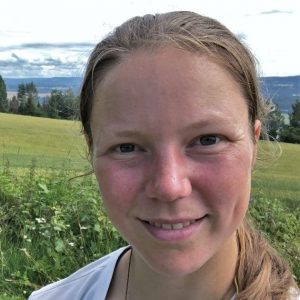
I am a second year- PhD student with a background in agricultural sciences. I am currently working in the shoot group at plant science institute of Forschungszentrum Jülich. Here we study plant functioning of crops by using modern sensor technologies. Before becoming a PhD student, I developed a pixel-aggregation approach that makes it possible to use coarse-resolution imagery for phenotyping purposes dealing with small experimental plots.
Mixed cropping has often been proposed as a promising diversification strategy aiming for a sustainable intensification in crop production. In mixed cropping, legume and cereal plants are simultaneously cultivated in a completely mixed arrangement. This system is known to show a positive effect on crop yields, namely the mixture effect, which results from a complementary exploitation of soil resources such as water and nutrients. A major benefit of legume-cereal intercropping is the complementary nitrogen use: legumes can cover a large part of their nitrogen requirements by atmospheric nitrogen fixation, while more soil mineral nitrogen remains for the intercropped cereal. Furthermore, different shoot architectures of the cropping partners allow an increased light interception resulting in higher biomass and yield production compared to sole crops.
However, the mixture effect can vary among different genotypes selected for crop mixtures. To get a deeper insight into physiological processes happening in different mixtures we want to focus on the most basic principle underlying yield production: photosynthesis. It should be noted though that not all the absorbed light is photochemically converted into biomass. Photochemistry competes with non-photochemical light use as well as with chlorophyll fluorescence emission of red and far-red light. Chlorophyll fluorescence can be measured non-invasively and linked to the photosynthetic functioning of a crop stand. To understand light-plant interaction in mixed canopies we apply hyperspectral sensor systems in a field trial. Here, different genotypes of faba bean (Vicia faba L.) and spring wheat (Triticum aestivum L.) with contrasting structural traits were combined in six legume-cereal mixtures. The 1:1 mixtures were compared to each other and against the respective sole crops.
First results of top-of canopy hyperspectral measurements collected from ground show that there is a strong link between fluorescence emission and light absorption of a canopy. Significant differences in fluorescence levels were found between monocropped plots of faba bean and spring wheat. However, we only found minor differences in fluorescence of different crop mixtures acquired in the early vegetation season. We believe that using airborne sensing technology can be a promising next step in order to quantify photosynthetic functioning of crop mixtures on the whole field scale with a high spectral, spatial and temporal resolution.
Supervised by: Bastian Siegmann, Thomas Döring, Uwe Rascher